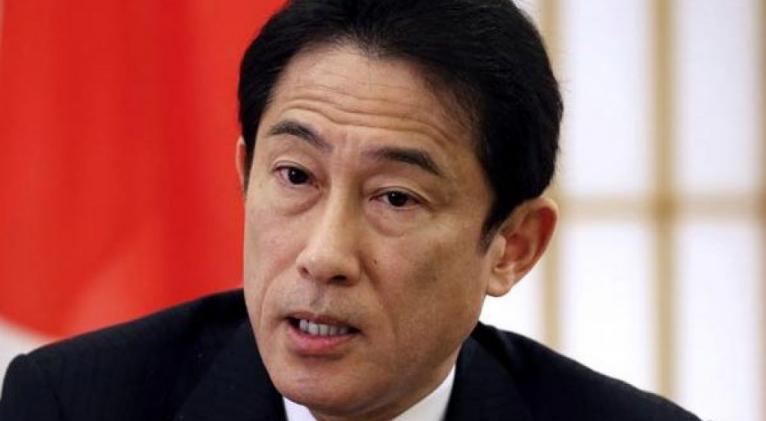Japan Offers Credit and Donates Medical Equipment to Cuba
especiales

Japanese Foreign Minister Fumio Kishida’s visit to Cuba came to an end on Sunday with benefits for the two countries: the issuing of credit lines and donation of medical equipment to State companies on the island and the opening of its market to Japanese investors and companies.
The last item on Kishida’s itinerary is something that few foreign officials are granted: a meeting with Fidel Castro. Details of their encounter has not been revealed.
Prior to this, Kishida held talks with Council of Ministers Vice-Chair Ricardo Cabrisas to identify projects that are of interest to Japan.
The twenty companies represented by the delegation headed by the Japan-Cuba Economic Conference Chair Tomoyoshi Kondo were informed on Saturday that Cuba’s short-term debt with Japanese entities had been settled, and that mid and long-term obligations are being renegotiated at the Paris Club, which gathers most of the creditors.
The presentations by the vice-president of the Cuban company BioCubaFarma, Jose Luis Fernandez, and those in the renewable energy sector, headed by Ministry of Energy and Mines official Rosell Guerra, were among the most noteworthy at the Business Forum.
Plenty of Formulas, Not Enough Production
The recently created BioCubaFarma not only produces medication and medical equipment, but also technologies and marketing strategies for the sector.
Luis Fernandez reported that the “corporation is made up of 32 companies, 78 production facilities and 21,700 employees, most of whom are university graduates. Its aim is to manufacture products and create strategies that have an impact of human health.”
“The success of our first series of products can be verified in Cuba,” he said. “Of the 888 basic medical products in use in the country, 592 are produced domestically,” he added.
The BioCubaFarma representative added that “we also develop 1,099 non-basic products, natural compounds used in homeopathic medicine.”
Fernandez Yero referred to some of Cuban science’s points of pride, the hepatitis B and meningococcal meningitis vaccines, as well as to comprehensive programs for the early detection of diseases.
“We have also developed vaccines against different types of cancer, even for patients with an advanced state of the condition, such as lung, cervical, prostrate, colon and head and neck cancer, among others.”
“The products developed are classified as biosimilars – similar to products available in the world market – or innovative, as is the case of Heberprot-P, proven to prevent amputations of diabetic feet in 70 percent of cases.”
Currently, BioCubaFarma has production facilities in Brazil, China, India, Iran, South Africa, Algeria and Venezuela. It is currently seeking foreign investment to expand its productive capacities in Cuba,” the official explained.
In this connection, the vice-president of the company said they are promoting 13 investment projects, some of them located in the Mariel Special Development Zone.
He explained that the “company entered a cooperation agreement with Japan’s Daiichi-Sankyo, aimed at the treatment of advanced gastric cancer. The product reports a survival figure of 11.93 months.”
“The company entered an agreement with Dalmer to produce 10 kilograms of recombinant proteins a year as part of the manufacture of oral biological medicines,” the official added.
Another initiative aims at building a pharmaceutical production complex for the manufacture of oral solids, the demand for which already exists in Latin America.
Lastly, the vice-president of BioCubaFarma described an investment project for the manufacture of 47 injectable genetic products, developed by the company, saying Cuba requires greater productive capacity.
Urgent Energy Infrastrcture Changes Needed
Cuba’s development policy established the modification of the country’s energy infrastructure as the priority of the 2015-2030 period.
A very high 97 percent of Cuba’s infrastructure depends on fossil fuels and the country urgently needs to increase the use of renewable energies and reduce its dependence on oil and gas, Russel Guerra, Energy Director at the Ministry of Energy and Mines, declared.
“Currently, the island has 4 wind farms and it requires 13 of these, with a generating capacity of 633 MW,” Guerra said.
Bio-electric sources are the solution for Cuba’s sugar industry, the official pointed out. “The sector has been opened to foreign investment for the construction of 19 plants, with furnaces that convert sugar-cane bagasse into 755 MW of electricity.”
Photo-voltaic panels should be able to generate around 700 MW, requiring 74 small hydroelectric plants (in addition to the 142 4-MW plants currently in operation), he said.
“Biomass derived from forest and farm residues is currently being used to generate electricity at four facilities, but there is a million hectares of marabou brush around the country waiting to be converted into a source of electricity,” Guerra affirmed.
“In all, investment projects should create a generating capacity of 2,100 MW. To do so means an investment of 3.7 billion dollars,” Guerra told the Japanese businessmen.













Add new comment